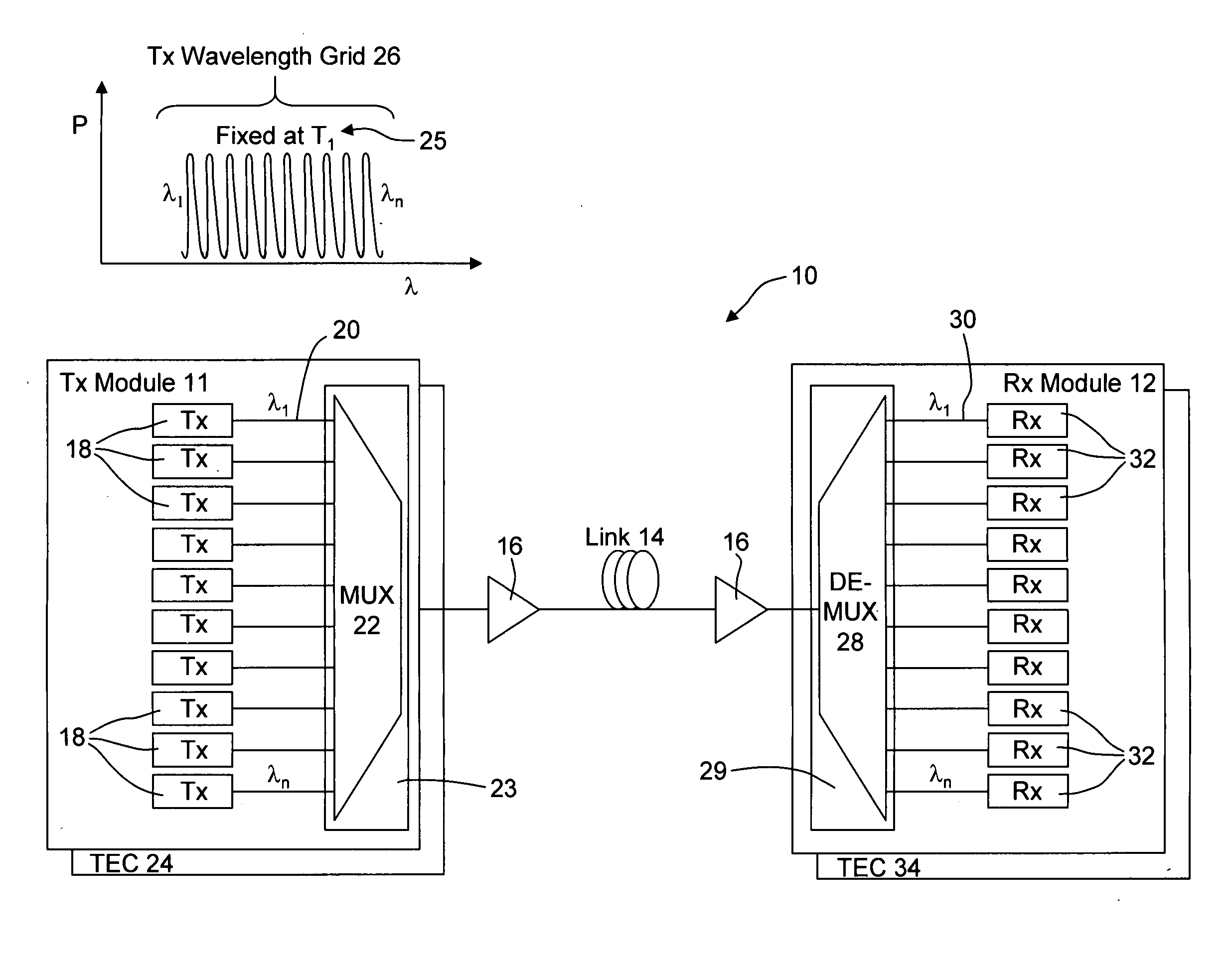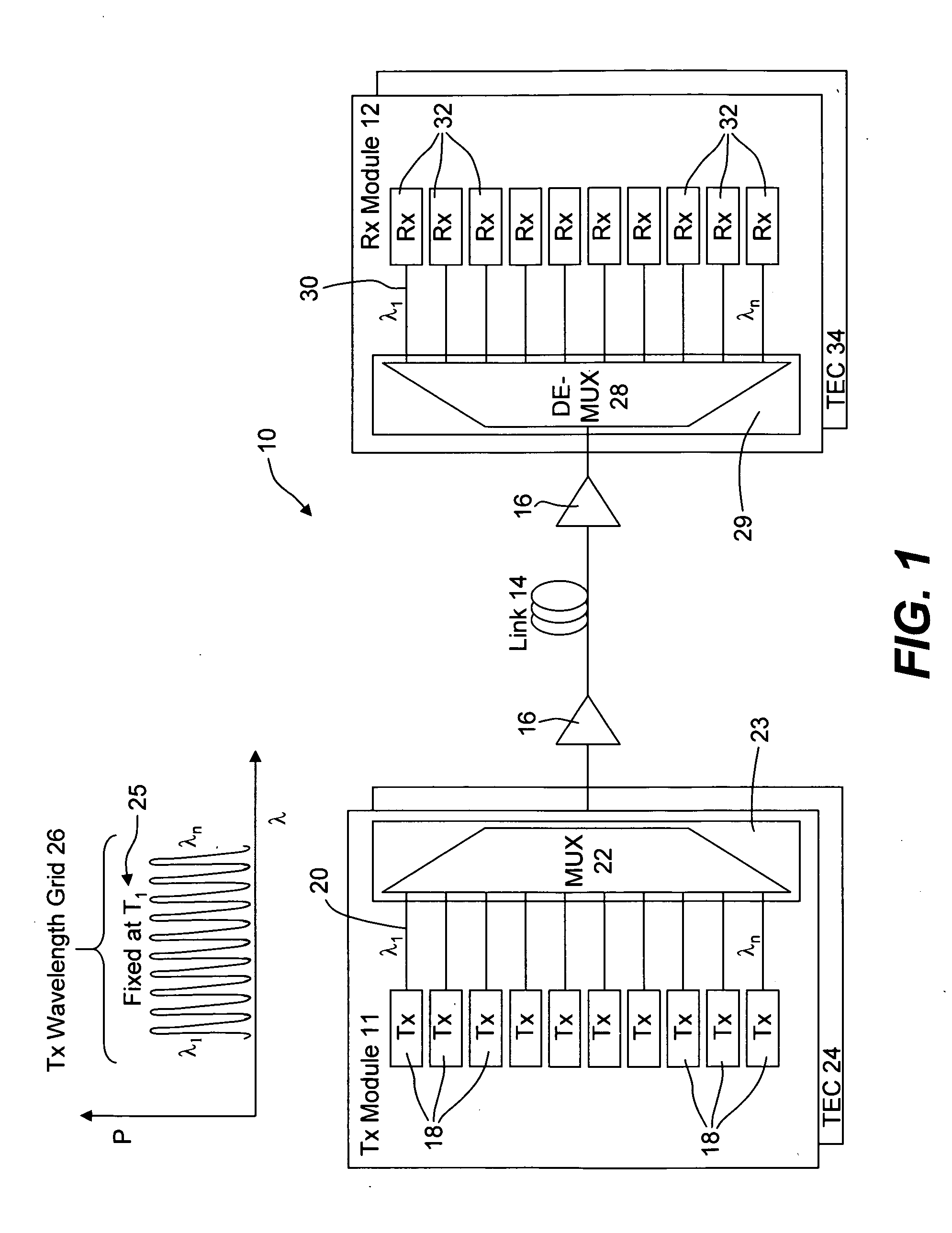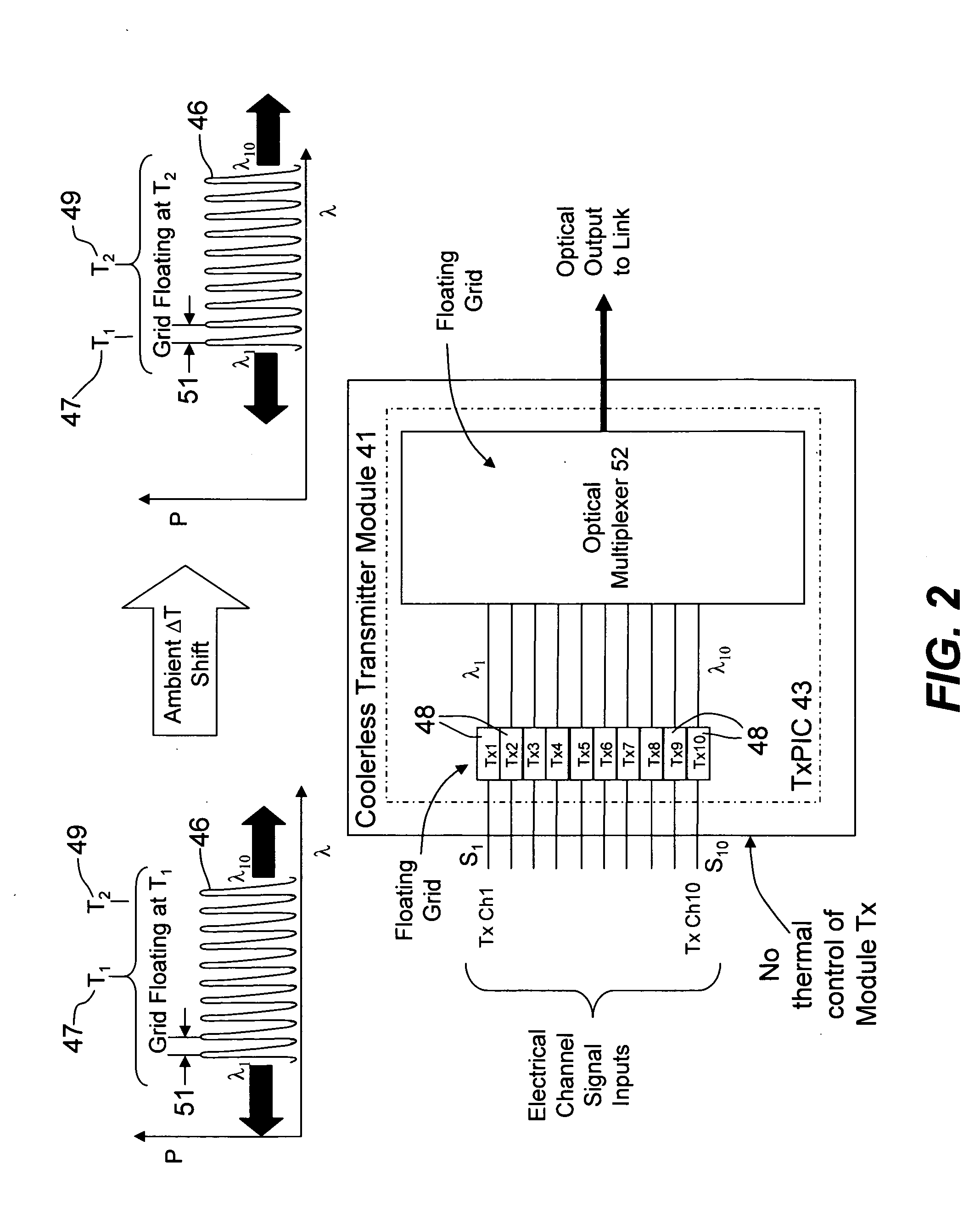Thermally-floating transmitter wavelength grid of signal channels in a WDM transmission system
a transmission system and transmitter wavelength technology, applied in the field of optical transmission systems or networks, can solve the problems of generating a considerable amount of heat, limiting the size, power and cost of such equipment, and significantly reducing the
- Summary
- Abstract
- Description
- Claims
- Application Information
AI Technical Summary
Benefits of technology
Problems solved by technology
Method used
Image
Examples
Embodiment Construction
[0022] Reference is now made to FIG. 1 which illustrates a conventional wavelength division multiplexing system or optical network 10. An optical transmitter module (Tx) 11 is optically coupled to an optical receiver module (Rx) 12 via an optical medium or link 14. The link 14 may include one or more optical amplifiers 16 to amplify the multiplexed signal in its transmission over link 14. Tx module 11 includes a plurality of optical transmitters 18 which number N and each provided with a modulated source at a designated wavelength on a standardized grid, such as the ITU grid. The grid of wavelengths λ1 to λn is shown at the top of FIG. 1 at 26 where the grid wavelengths are maintained at their desired wavelengths by means of fixing the temperature at the module to T1 as indicated at 25. Each of the transmitters may be a discrete modulated source or all or some of the transmitters 18 may be integrated on a single chip as illustrated in incorporated Pub. No. US 2003 / 0095737 A1. By “mo...
PUM
 Login to View More
Login to View More Abstract
Description
Claims
Application Information
 Login to View More
Login to View More - R&D
- Intellectual Property
- Life Sciences
- Materials
- Tech Scout
- Unparalleled Data Quality
- Higher Quality Content
- 60% Fewer Hallucinations
Browse by: Latest US Patents, China's latest patents, Technical Efficacy Thesaurus, Application Domain, Technology Topic, Popular Technical Reports.
© 2025 PatSnap. All rights reserved.Legal|Privacy policy|Modern Slavery Act Transparency Statement|Sitemap|About US| Contact US: help@patsnap.com



